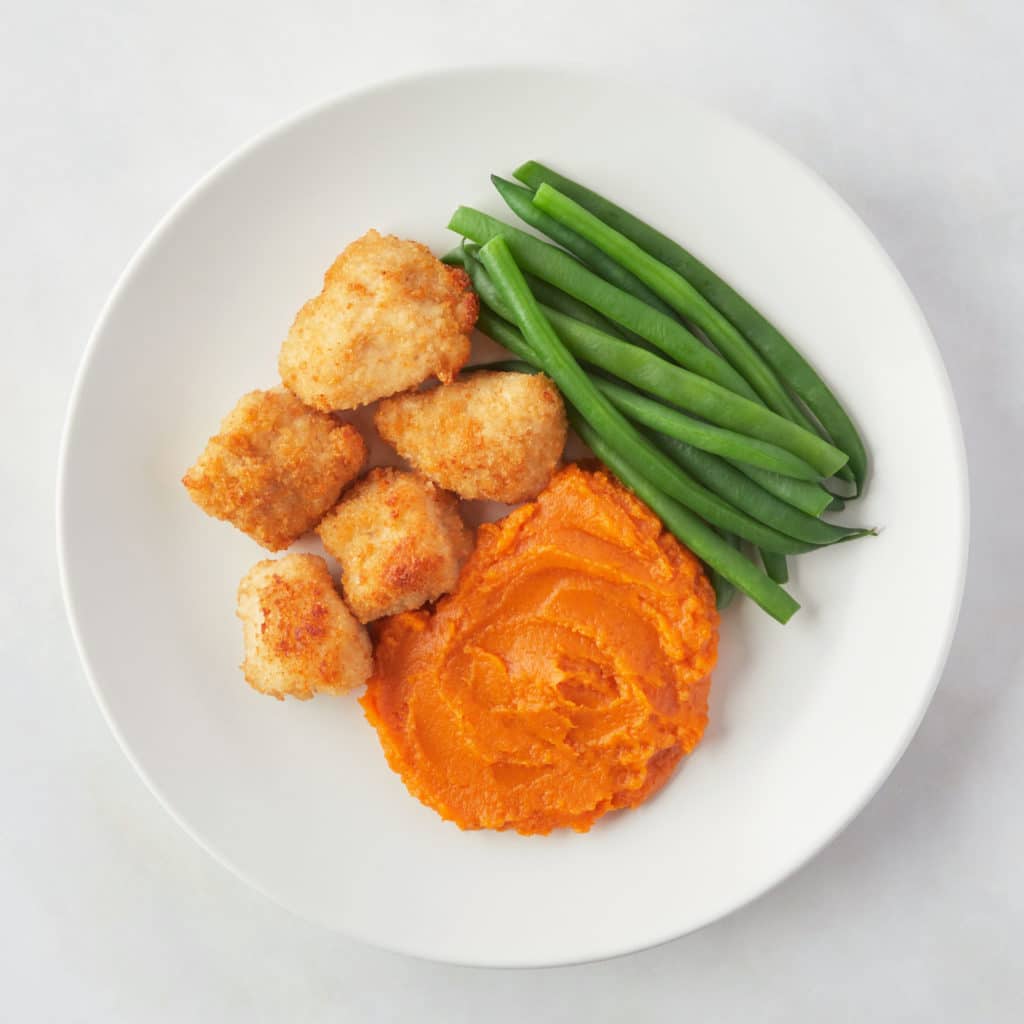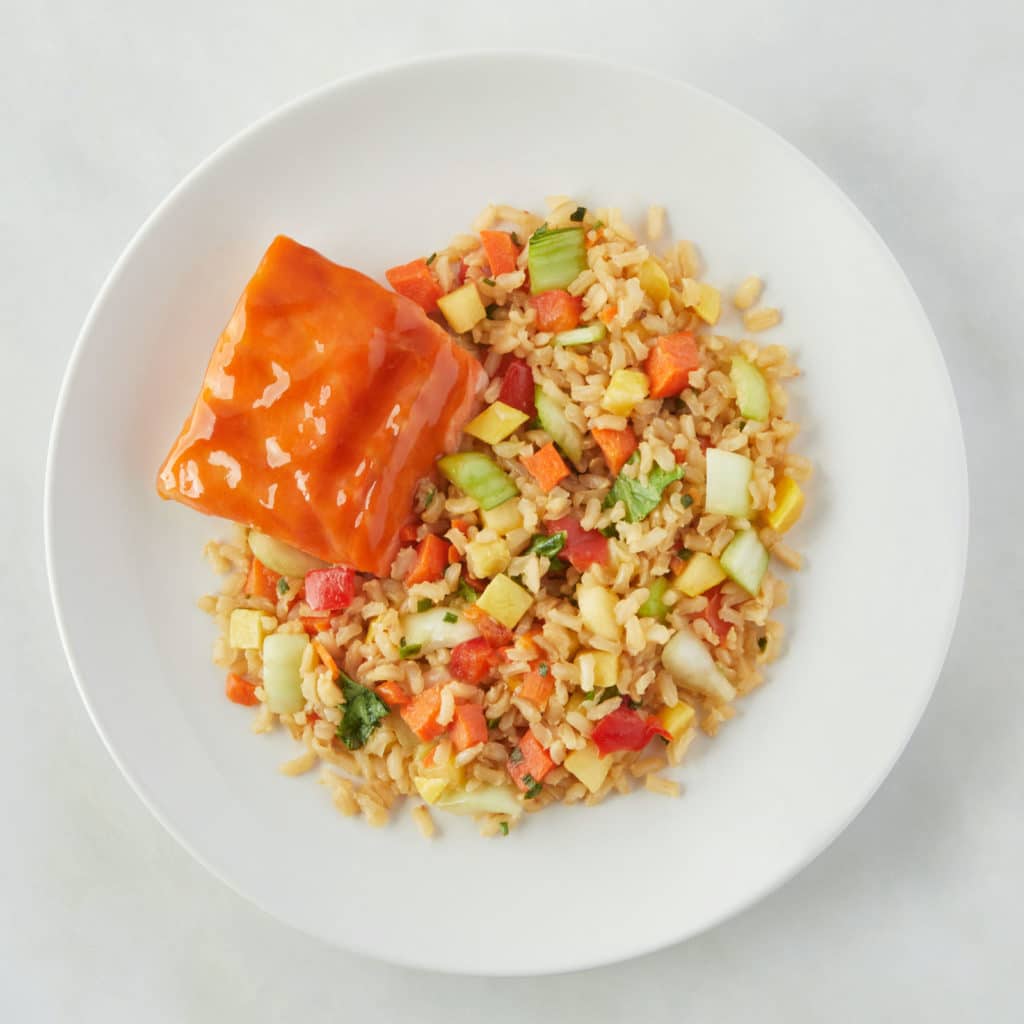Best Healthy Meals for Toddlers
Whether you’ve got a picky eater on your hands or simply not enough time, it’s all too easy to fall into the routine of feeding your toddler the same meals over and over. However, as your little ones grow, their palates should too! As you provide healthy meals for toddlers, they’ll learn to love different foods and flavors. When you prioritize healthy ingredients like lean meats and proteins, whole grains, vegetables and fruits, new foods become more approachable, and your toddler may actually begin to enjoy them.
The good news is, serving a variety of meals doesn’t have to be hard! With a little planning, you can provide an assortment of balanced, healthy meals for toddlers at any time of the day!
Healthy Breakfast Ideas for Toddlers
If your mornings are busy (whose aren’t?), look for simple healthy breakfast ideas for kids that don’t take long to prepare. Here are some of our favorites that focus on starting the day with balance:
- Yogurt with cereal or muesli and sliced bananas
- Oatmeal with diced strawberries
- Cottage cheese with sliced peaches
- Veggie-loaded omelet or scrambled eggs with whole wheat toast and fruit
- Whole grain pancakes or waffles
If you’re looking for an even quicker healthy meals for toddlers on-the-go, Nurture Life’s toddler meal delivery can do the work for you! Our Egg Bite with Mini Pancakes and Sweet Potatoes provides a healthy balance of protein and veggies and is ready in 2 minutes or less.

Healthy Lunch Ideas for Toddlers
Just like breakfast, lunch doesn’t have to be complicated to be appealing to your toddler while still providing wholesome nutrition. Try mixing and matching some of these ingredients for well-rounded healthy meals for toddlers that will keep them fueled through the afternoon:
- Whole wheat pasta. For toddler lunch ideas, pasta is almost always a hit—easy to eat and even easier to prepare. Look for 100% whole wheat pasta in a shape your child will like, then get creative with adding in a variety of protein and vegetables. For a healthy premade meal, our Bolognese with Penne includes organic carrots stewed with tomatoes, ground beef and pork.
- Shredded chicken. Shredded chicken is a great starting point for a variety of quick toddler lunches—think quesadillas with whole wheat tortillas, chicken and veggies, crock pot chicken with tomatoes or shredded chicken in whole wheat pita sandwiches.
- Chicken Bites. For those feeding the pickiest of eaters, try our Chicken Bites with Mashed Sweet Potatoes & Green Beans. Our antibiotic-free chicken bites are protein-filled and paired with organic green beans and mashed sweet potatoes for some sweetness and a boost of vitamins on the side. This meal can be reheated in less than 2 minutes and introduces new veggies to your little one.

Because lunch is during the mid-day rush, parents often go for the easiest options—and that’s totally fine! Just remember that toddlers need about 3–5 servings (or about .75–1.25 cups) of veggies per day, so try to incorporate some of these servings during this meal to provide more healthy meals for toddlers.
Healthy Dinner Ideas for Toddlers
Dinner is a great time to try out new foods with your toddler! With the chance to have the whole family around the table, dinner provides the perfect opportunity to encourage your toddler to try table foods the rest of the family is eating. Here are some quick and nutritious options for meals your toddler—and the rest of the family—will love:
- Veggie-loaded meatballs. Mix ground beef, turkey, chicken or legumes such as lentils with minced carrots, zucchini or bell peppers for a nutritional boost to kid-friendly meatballs.
- Teriyaki Salmon with Rainbow Veggie Rice: If you’d like to expand your toddler’s palate, experiment with different combinations of proteins and vegetables. Our roasted salmon is served with a mix of brown rice, bell peppers, squash and bok choy for a bright and balanced meal.

- Sheet Pan Chicken Fajitas: These healthy alternatives to fajitas are not only easy to make (and clean up!) but also give you the chance to introduce new veggies—like red peppers and avocado—to your toddler’s palate.
Although dinner may be a great time to have your toddler try out foods, make sure each new bite is safe for them. Encourage your child to take small bites and to chew slowly and thoroughly. Chop bigger items into small pieces and always remove any pits or seeds before serving. Cut round foods—such as grapes and cherry tomatoes—into quarters. Also, make sure your child completes one full bite before starting another.
The Importance of Healthy Meals for Toddlers
Unlike babies and older kids, toddlers are at a strange crossroads when it comes to healthy eating. They’ve likely just started feeding themselves, making baby food a no-go, but they’re also too young to be given the same foods as the adults and older children at the table. However, as long as you keep introducing fresh flavors and textures into their diet, you’ll be able to prepare them for healthy foods long before they can develop bad habits such as picky eating and loading up on sugars and preservatives.
One of the main challenges is that toddlers have small tummies, yet they have an outsized appetite for unhealthy ingredients and foods. Given the option, they’ll pick sweet snacks loaded with empty calories, which is precisely the opposite of what they need for their developing bodies and minds. If you ever want to get ahead, you’ll have to start serving healthy meals for toddlers as soon as you get the chance.
Self-feeding starts at about 6-8 months, depending on whether you subscribe to baby-led weaning or traditional weaning. By about a year-and-a-half they’ll start using utensils during mealtime. It’s important to encourage, not admonish, during these early feeding stages, especially since a bad food experience at this point could develop into a lifelong struggle with food.
As their skills develop, you’ll be able to reduce your lending hand, allowing your toddler some independence at the table. After all, you’re controlling what foods they can choose from, so you’ll want to allow them to make decisions to develop their own tastes and preferences.
What About Milk?
Because it contains both calcium and vitamin D, which helps build strong bones, as well as protein, potassium and vitamin A and B, in addition to magnesium, milk is kind of one of those healthy meals for toddlers that seems too easy.
Milk makes a great snack or part of a nutritious and complete meal, and most kids under the age of 2 should drink whole milk for additional dietary fats that help with body and brain development. Overweight toddlers or those with a family history of obesity, cholesterol or heart problems should substitute whole milk for 2% milk. Either way, at around 2 years, you’ll want to switch over to low-fat or nonfat milk as too much whole milk can lead to the aforementioned health problems.
At about 12 to 18 months, make the change from bottles to cups, but don’t do it all at once. Start by eliminating bottles from mealtimes, only offering milk in a cup once the meal has started. By doing this, you’ll reinforce milk as a part of a nutritious meal, not a mealtime goal itself.
That said, some toddlers may be turned off by cow’s milk as it’s different enough from the breast milk or formula they’ve gotten used to. If this happens, start by mixing milk with breast milk or formula to gradually introduce the different taste and flavor. Eventually, they’ll be drinking 100% milk, which is a great healthy meal option for toddlers.
The Importance of Iron
When a child reaches year 1, iron deficiency can become an issue. Affecting everything from physical development to mental development and even behavioral development, an iron deficiency is serious business. Left unchecked, it can even lead to anemia, which is a condition where there aren’t enough red blood cells to carry oxygen throughout the body. Anemia can lead to lethargy and weakness, and symptoms range from mild to severe with both short- and long-term effects.
The good news is that preventing anemia is relatively easy when you give your child the nutrition they need to grow up strong and healthy. Iron-rich foods such as meat, poultry, fish, beans and other iron-fortified options are excellent healthy meals for toddlers, though you’ll also want to limit your child’s milk intake to 16 ounces a day.
Milk actually interferes with the body’s ability to absorb iron from foods or supplements, and milk can even cause the intestines to lose small amounts of blood, which can actually reduce iron levels in the body. For kids that love to load up on milk, that can present a real danger, and if they’re consuming so many calories of milk they might not even be hungry enough to get valuable nutrition from solid foods.
Iron-fortified cereals are a good, healthy meal option for toddlers since they help offset the shortcomings of milk, but watch out for sugar and preservative overload. Once your toddler starts eating other iron-rich foods at about 18-24 months, you can switch to other cereals while you continue to watch for sugar levels.
If your toddler is craving milk but not getting enough iron-rich foods, talk with your child’s pediatrician to see if vitamin supplements or another option could help.
Foods To Avoid
By the age of 1 or 2, your toddler should be eating healthy meals and a variety of foods. When experimenting, however, you’ll want to watch out for allergies. If you’re serving a new food or something that a family member is known to have an allergy to, pay special attention. Allergy-related conditions such as eczema or asthma can also provide clues, but when in doubt you might want to leave it out.
In general, you should avoid any foods that present a choking hazard. Whole grapes, berries and other round foods can end up lodged in your toddler’s airway, restricting breathing or leading to a dangerous choking episode. Cut up any choking hazards into smaller, more easily digestible pieces, and ensure that you’re supervising them during every meal.
Questionable foods include popcorn, hard candies, hot dogs, raw vegetables and hard fruits, including grapes, raisins and nuts. If you’re considering creating meals from these ingredients, know that you’ll have to put in some work — never serve them without prep.
How Much Is Too Much?
While older kids and adults may have haphazard eating habits, you may need to make healthy toddler meals on a regular basis. In order to get them used to a three-meal-a-day diet, you’ll want to provide three meals a day in addition to two or three snacks whenever they call for more food.
That said, if a child isn’t hungry, don’t force them to eat. Their growing bodies and minds need lots of healthy nutrition to function at their best, but they should be the best judge of how much they’re eating. Similarly, you don’t want to let a child snack on food all day long — a regular schedule is important.
Need Healthy Meals for Toddlers? Nurture Life Can Help
No matter what time of day you need easy, healthy meals for toddlers, know that Nurture Life is here to help provide nutritious meals that are convenient for you—and delicious for them! If you have any questions about your toddler’s nutrition, don’t hesitate to send our nutrition experts a message at support@nurturelife.com.

